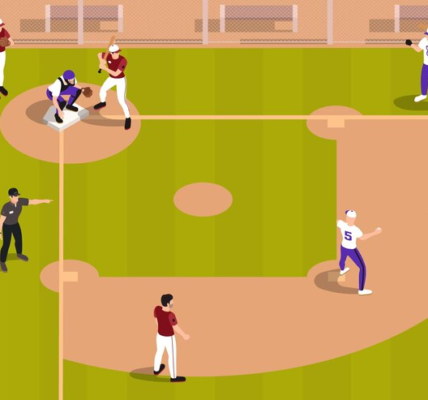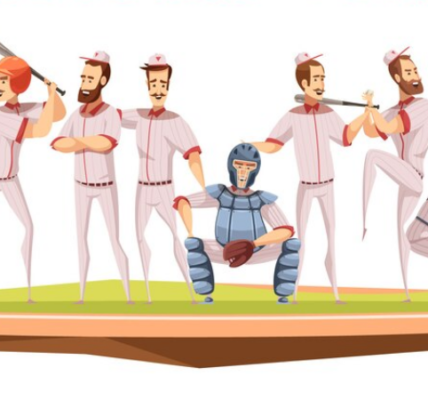Baseball, America’s favorite pastime, is a game of strategy, skill, and precision—and the humble baseball is at the core of it all. Interestingly, the weight of a baseball is not just a random figure, but it is a critical part of the intricate design of the game, influencing every throw, swing, and catch.
Far from being a simple sphere, the baseball is an epitome of precision engineering, and its weight is regulated by official standards. According to the stipulations set by Major League Baseball (MLB), the governing body of professional baseball in the U.S and Canada, the weight of an official baseball must fall between 5 to 5.25 ounces, equivalent to 142 to 149 grams.
The Evolution of Baseball: A Journey Through Time
Even a cursory glance at the history of baseball reveals a sport that has weathered through times of change, continually evolving to mirror the fluctuating demands of its ardent followers, reflecting the nation’s spirit in every stitch of the baseball. Intriguingly, even the stitching pattern on a baseball bears testimony to the scientific and technological advancements in sports equipment design.
The Dawn of the National League and the Advent of the Dead Ball Era
Dating back to 1876, the establishment of the National League marked a significant milestone in baseball history. This era witnessed the introduction of baseballs with rubber cores, differing greatly from their predecessors, which were made inconsistently, with varying weights.
A.G. Spalding, a prominent figure in the baseball sphere, conceived the first standardized baseball design, laying the foundations of what would eventually become a century-long monopoly in the supply of baseballs for the league.
The year 1910 heralded yet another transformation with the unveiling of a new baseball design featuring a cork core during the celebrated Fall Classic. A decade later, in 1920, a ground-breaking rule amendment altered the nature of the game: balls would no longer be used for an entire game unless they physically unraveled. The crucial reason behind this seemingly strange rule was the difficulty players faced due to the dirt-covered balls.
The Rise of the Live Ball Era
The year 1920 marked a watershed moment in baseball history, inaugurating the live-ball era. This epoch is characterized by the prohibition of spitballing, along with the introduction of rules requiring the replacement of dirty, soft, or damaged balls.
Spalding led yet another revolution in the design of baseballs, adopting Australian wool for the yarn component, making it noticeably easier for batters to hit home runs. Moreover, during this epoch, the ball manufacturing process was standardized, and the weight of a baseball was fixed at three ⅛ oz.
The Influence of World War II on Baseball Design
Unavoidably, World War II had a profound impact on the availability of rubber, a critical material in the manufacturing of baseballs. The resources for the war effort outweighed the importance of baseball materials.
In response to the situation, baseball manufacturers resorted to cork as a replacement for rubber. As the war progressed, in 1944, synthetic rubber began mass production, and the specifications for baseballs reverted to their pre-war standards.
Baseball Anatomy: An Inside Look at the Game’s Crucial Component
The sport of baseball has become an iconic symbol of America’s culture and history. One of the key elements that have shaped the game as we know it today is the baseball itself. So, have you ever wondered what exactly a baseball is made of on the inside? Let’s break it down.
The Core: The Heart of a Baseball
At the core of a baseball lies a small sphere of cork, often referred to as the ‘pill’. The pill forms the central part of the ball, providing the fundamental structure and weight necessary for the game.
The Middle Layer: Rubber and Yarn
Surrounding the cork core is a layer of rubber, which adds to the weight and provides a cushioning effect. This rubber layer ensures that the cork core remains secure and helps the ball maintain its shape during the intense action of a baseball game.
The rubber layer is followed by tightly wound woolen yarn. This yarn’s role is crucial as it gives the baseball its characteristic firmness. The tight winding ensures that the ball can withstand the impact of powerful hits, as well as providing the right level of bounce.
The Outer Layer: From Horsehide to Cowhide
Once the yarn wrapping is complete, the ball is finally given its outer skin: a layer of leather. The leather not only protects the inner components of the ball but also provides the right grip for players, allowing them to pitch, catch, and hit the ball with precision.
Historically, horsehide was the choice material for this layer. However, following the end of World War II, a shift was made to cowhide. This switch was primarily due to the superior availability and durability of cowhide compared to horsehide.
Over time, the composition of a baseball has seen numerous changes. These adjustments in materials and manufacturing processes have been driven by various factors, including technological advancements, supply availability, and a deep understanding of the physics of the game.

Inside the Sphere: The Intricate Production Process of Baseballs
Unveiling the meticulous process of creating a single baseball sheds light on the high precision and strict adherence to standards necessary to maintain the game’s integrity. The manufacturing process of baseballs is an intricate balance of craftsmanship and industrial production, ensuring the mass-produced spheres meet the required standards.
Building Blocks of a Baseball: Materials and Assembly
In essence, the manufacturing of a baseball involves the seamless assembly of different materials around a small rubber sphere, barely the size of a cherry. The construction process begins with the molding of this rubber sphere, which acts as the central core of the baseball.
The rubber core is encased in a layer of wound fabric, followed by the application of a cowhide exterior. The cowhide is meticulously stitched into place, ensuring that the baseball holds its shape even under the strenuous conditions of a professional game.
The resulting product is a perfectly formed sphere, built to withstand the intensity and spirit of America’s favorite pastime.
Mass Production and Quality Control: The Big Picture
Annually, Major League Baseball (MLB) uses nearly a million baseballs, a staggering number that necessitates a highly efficient mass production process. The materials used in the manufacturing of these baseballs include round cushioned cork for the core, wool windings for the intermediary layers, and durable cowhide for the outer shell.
However, mass production does not compromise the strict quality control standards in place for the baseball manufacturing process. Every step of the production process is meticulously controlled, ensuring that all the conditions adhere to the predefined rules.
Frequently Asked Questions About Baseballs
How Much Does a Little League Baseball Weigh?
The weight of a baseball can vary depending on the age group and skill level of the players. For instance, the MacGregor 74 Cal Ripken baseball, specifically designed for players aged between 8 and 9 years, weighs approximately 4.3 oz. This lightweight design accommodates the strength limitations of younger players and enhances safety during gameplay.
For even younger players, balls like the Baden Level-5 Safety Baseball are used. Weighing approximately 4.19 lbs., these balls have a poly center to provide a lighter feel. The Rawlings Ripken Baseball, another variant, is often used for children in the second grade.
What is the Weight of an MLB Baseball?
In professional baseball, such as MLB, the baseball’s weight is standardized. An MLB baseball typically weighs between 5 and 5.25 oz. These balls are composed of a cork and rubber core, tightly wound with yarn to maintain its compact structure. The cover is constructed with white leather, stitched together to ensure maximum durability. It’s interesting to note that each MLB baseball features 108 double stitches, all sewn meticulously by hand.
How Much Does a Weighted Baseball Weigh?
Weighted baseballs are specialized equipment used to enhance a player’s arm strength, agility, and speed. The weight of these baseballs varies according to the specific training needs of the hitter or pitcher. Some weighted baseballs weigh slightly more than a regular baseball, starting at around 6 oz., and can go up to 12 oz. Utilizing weighted baseballs can help hitters generate more power and even increase exit velocity. Pitchers also use them to improve throwing speed and stability and potentially reduce injury rates.
What is the Average Lifespan of a Baseball?
A professional baseball’s lifespan is surprisingly short. At the start of a game, each team is required to provide 90 new baseballs. Typically, around 60-70 balls are used per game, but in some instances, this number can escalate to 120. On average, an MLB baseball is only in play for approximately six pitches before it needs to be replaced.
Exploring the Heights of MLB Players
In the world of Major League Baseball (MLB), players come in a diverse range of heights, each contributing their unique skills and strategies to the game. Here’s a glimpse into the heights of MLB players, showcasing the variety and talent that adds to the rich tapestry of this beloved sport
From towering pitchers to agile infielders, the diverse heights of MLB players contribute to the game’s complexity and excitement, highlighting the fact that success in baseball comes in all sizes.
Conclusion
Understanding the baseball’s composition, the meticulous craftsmanship behind its creation, and its role beyond the game enriches our appreciation for this simple yet highly engineered sphere. Every pitch, hit or catch in a game of baseball carries the legacy of years of refinement and innovation. Being more than just sports equipment, baseballs embody the spirit of America’s favorite pastime, bearing testament to the dedication and precision that goes into perfecting every aspect of the game.




